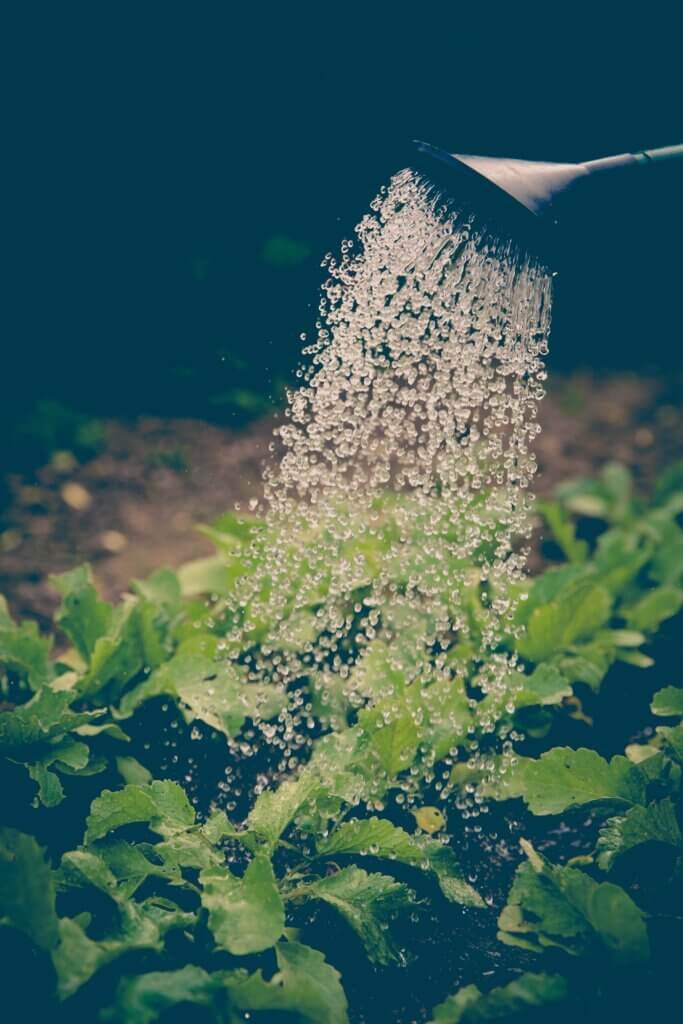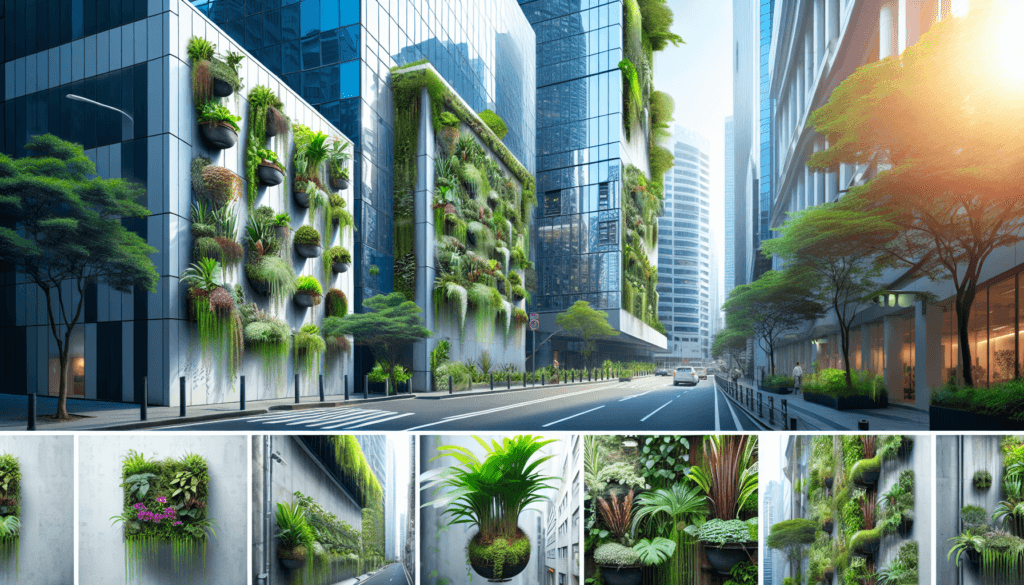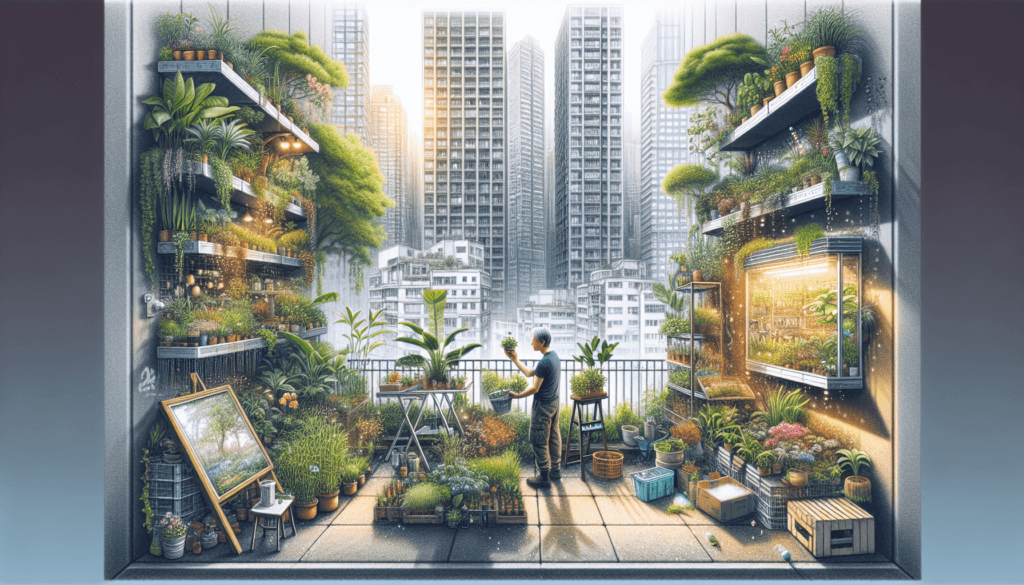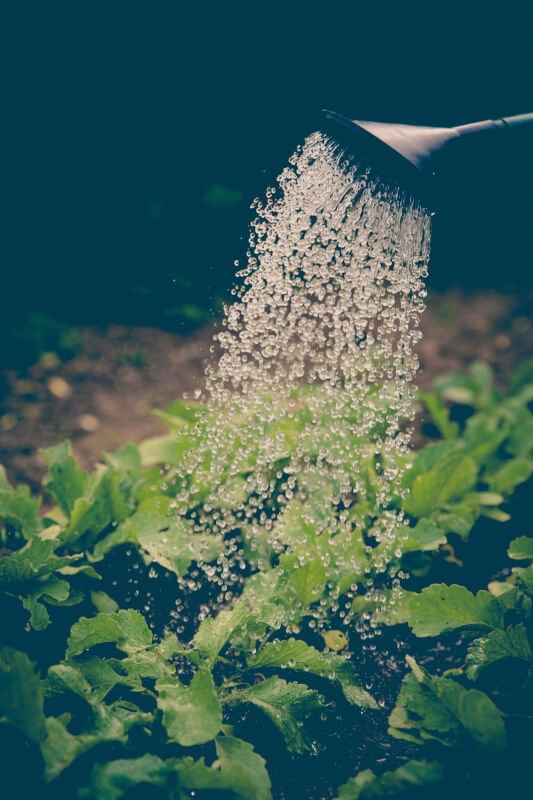Living in a bustling city with limited access to sunlight doesn’t mean you have to give up on your dream of having a thriving urban garden. With a few simple strategies and creative solutions, you can maximize the limited sunlight available in your urban oasis and create a lush and vibrant garden space that will leave your friends in awe. Whether you have a small balcony or a tiny rooftop, this article will provide you with practical tips and innovative ideas to make the most of the sun’s rays and transform your urban garden into a green sanctuary.

Choosing the Right Plants
Understanding the Different Light Requirements of Plants
When it comes to gardening in an urban setting with limited sunlight, understanding the light requirements of plants is crucial. Not all plants have the same needs when it comes to sun exposure. Some thrive in full sun, while others prefer shade or partial shade. By familiarizing yourself with the light requirements of different plants, you can choose the ones that are most suited for your specific garden conditions.
Selecting Shade-Tolerant Plants
In urban gardens with limited sunlight, shade-tolerant plants play a vital role in bringing life and beauty to the space. These plants are adapted to thrive in low-light conditions and can survive with minimal direct sunlight. When selecting shade-tolerant plants, consider options such as ferns, hostas, and begonias. These plants are not only resilient but also offer a range of captivating colors and textures that can add visual interest to your garden.
Opting for Indoor Plants
If your urban garden receives very little sunlight, you might want to consider incorporating indoor plants as part of your green oasis. Indoor plants are an excellent choice for low-light environments and can thrive under artificial lighting. Some popular indoor plant options that can tolerate low light include spider plants, pothos, and peace lilies. These plants not only beautify your indoor space but also help to purify the air and create a healthier environment.
Utilizing Artificial Lighting for Sun-Loving Plants
Even in an urban garden with limited sunlight, it is possible to grow sun-loving plants by utilizing artificial lighting. LED grow lights are a great option for providing the necessary light spectrum for the growth and development of plants. By strategically placing these lights, you can ensure that your sun-loving plants receive an adequate amount of light to thrive. Make sure to research the specific lighting requirements of each plant to ensure optimal growth and vitality.
Maximizing Natural Light
Identifying the Best Sunlit Areas
In an urban garden with limited sunlight, it is essential to identify the areas that receive the most natural light. Observe your garden throughout the day and take note of the spots that receive direct sunlight for the longest duration. These sunlit areas are ideal for placing plants that require more sunlight. By strategically locating your plants in these areas, you can optimize their exposure to natural light and promote healthy growth.
Strategic Plant Placement
To make the most of the limited sunlight in your urban garden, consider the placement of your plants. Grouping plants with similar light requirements together will ensure that they receive the appropriate amount of sunlight. By placing taller plants to the north of shorter ones, you can prevent them from shading the smaller plants. Additionally, consider placing shade-tolerant plants underneath taller structures or in areas where they can benefit from the limited sunlight available.
Using Reflective Surfaces
Another way to maximize natural light in your urban garden is by utilizing reflective surfaces. By strategically placing mirrors or light-colored surfaces, you can redirect sunlight towards shaded areas and increase the overall brightness of your garden. Reflective surfaces can be positioned to bounce light off walls or fences, allowing it to reach plants that might otherwise be deprived of sunlight. This simple technique can make a significant difference in ensuring adequate light for your plants.
Utilizing Light-Reflecting Containers
In addition to using reflective surfaces, choosing light-reflecting containers can further optimize the natural light in your urban garden. Containers made of materials such as metallic or glazed ceramic can enhance sunlight reflection and increase the amount of light available to your plants. Consider placing light-reflecting containers strategically in shaded areas or under structures to provide an extra boost of sunlight to your plants.
Creating Shade Structures
Building a Shade Sail
When dealing with limited sunlight, creating shade structures can help protect your plants from excessive heat and maximize their chances of thriving. One option is to construct a shade sail, which is a fabric canopy that provides shade while allowing some light to filter through. Shade sails are versatile and can be adjusted or removed as needed, giving you control over the level of shade provided. Consider installing a shade sail over fragile plants or areas where shade is required during the hottest parts of the day.
Constructing Pergolas or Arbors
Pergolas and arbors are not only visually appealing but can also provide shade in an urban garden with limited sunlight. These structures can be built using various materials such as wood, metal, or vinyl, and offer partial shade depending on their design and the type of climbing plants grown on them. By strategically placing pergolas or arbors in your garden, you can create shaded areas that protect your plants from excessive sun exposure and create a comfortable outdoor living space.
Installing Shade Cloth
For areas with direct sunlight for extended periods, installing shade cloth can be an effective solution. Shade cloth is a woven or knitted fabric that can be attached to structures or frames to provide shade. It comes in various densities, allowing you to choose the level of shade required for your plants. By installing shade cloth above specific areas or plants, you can regulate the amount of sunlight they receive and protect them from the scorching heat.
Utilizing Umbrellas or Canopies
If you have smaller plants or containers that require shade in an urban garden with limited sunlight, utilizing umbrellas or canopies can be a simple yet effective solution. These portable shading options can be easily adjusted and moved to provide shade where it is needed the most. Consider placing umbrellas or canopies over delicate plants or containers during peak sun hours to shield them from direct sunlight and prevent overheating.
Optimizing Soil and Watering Techniques
Improving Soil Quality
Creating optimal growing conditions for your plants in an urban garden with limited sunlight starts with improving the quality of the soil. Amending your soil with organic matter such as compost or well-rotted manure can enhance its fertility, structure, and water-holding capacity. By ensuring that your soil is rich in nutrients and well-draining, you provide a healthy foundation for your plants to thrive. Conduct a soil test to determine the pH level and nutrient composition of your soil, and make any necessary adjustments based on the specific needs of your plants.
Mulching to Retain Moisture
Mulching is an effective technique to retain moisture in the soil and reduce water evaporation in an urban garden with limited sunlight. Applying a layer of organic mulch, such as wood chips or straw, around your plants helps to insulate the soil, regulate temperature, and prevent moisture loss. Mulch also aids in suppressing weed growth, which can compete with your plants for limited water and nutrients. Remember to replenish the mulch regularly to maintain its effectiveness and promote a healthy growing environment for your plants.
Choosing the Right Watering Methods
In an urban garden with limited sunlight, it is important to choose watering methods that are efficient and tailored to the needs of your plants. Hand watering with a watering can or hose allows for targeted watering and ensures that water reaches the roots of your plants more effectively. Avoid overhead watering methods, such as sprinklers, as they can waste water through evaporation and increase the risk of fungal diseases. Water your plants early in the morning or late in the evening to minimize water loss from evaporation and maximize absorption by the roots.
Applying Water-Conservation Strategies
Conserving water in an urban garden with limited sunlight is not only environmentally friendly but also essential for the survival of your plants. Implementing water-saving techniques can help you make the most of the water you have available. Consider collecting and utilizing rainwater by installing a rain barrel or harvesting water from household sources like air conditioning units. Additionally, group plants with similar water needs together to prevent overwatering or underwatering. Installing drip irrigation systems or using self-watering containers can also help conserve water while ensuring your plants receive the moisture they need.

Implementing Container Gardening
Choosing Suitable Containers
In an urban garden with limited sunlight, container gardening allows you to have more control over the growing conditions of your plants. When selecting containers, choose ones that are suitable for the size and needs of your plants. Ensure that they have adequate drainage holes to prevent waterlogging, which can be detrimental to plant health. Consider using containers made of lightweight materials such as plastic or fiberglass, as they are easier to move and manage in urban settings.
Using Lightweight Potting Mixes
To optimize container gardening in an urban garden with limited sunlight, it is important to use lightweight potting mixes. These mixes allow for proper drainage and aeration, promoting healthy root growth and preventing waterlogged soil. Look for potting mixes that are specifically formulated for containers and contain a blend of organic matter, such as compost, and materials like perlite or vermiculite for improved porosity. Using lightweight potting mixes will not only benefit your plants but also make it easier to move containers around and rearrange your garden as needed.
Providing Adequate Drainage
Proper drainage is crucial in container gardening to prevent the roots of your plants from sitting in excessively wet soil. Ensure that your containers have sufficient drainage holes at the bottom to allow excess water to escape freely. Elevating the containers by placing them on bricks or pot feet can further enhance drainage and prevent water accumulation in saucers or trays. Regularly check the drainage holes to ensure they are clear of debris and not blocked, as this could lead to waterlogged roots and plant stress.
Rotating Containers for Sun Exposure
In an urban garden with limited sunlight, it is common for certain areas to receive more sunlight at different times of the day. To ensure that all your plants receive an adequate amount of sunlight, consider rotating your containers periodically. By rotating your containers, you can expose different sides of the plants to sunlight and prevent them from leaning or growing unevenly towards the light source. This practice promotes balanced growth and prevents plants from becoming leggy or weak due to inadequate exposure to light.
Vertical Gardening in Small Spaces
Installing Vertical Planters and Trellises
In an urban garden with limited space, vertical gardening is an excellent technique for maximizing growing area and utilizing sunlight efficiently. Install vertical planters or trellises on walls, fences, or free-standing structures to grow plants vertically. Vining plants such as tomatoes, beans, or cucumbers can be trained to grow upwards. Vertical gardening not only saves space but also allows plants to receive more sunlight by exposing their foliage to the sun, resulting in healthier growth and increased productivity.
Growing Vines and Climbers
Vines and climbers are ideal choices for vertical gardening in urban spaces with limited sunlight. These plants can be trained to grow on trellises, fences, or walls, taking advantage of available vertical surfaces. Popular vine options for urban gardens include grapevines, passionflowers, and climbing roses. By planting these climbers in areas with adequate sunlight, you can utilize vertical space and create a visually stunning green display.
Utilizing Hanging Baskets
Another effective way to incorporate vertical gardening in an urban garden with limited sunlight is by utilizing hanging baskets. Hanging baskets allow you to grow plants at eye level, maximizing sunlight exposure and adding visual interest to your garden. Consider planting trailing plants such as ivy, petunias, or trailing succulents in hanging baskets. Hang them in areas that receive the most sunlight, ensuring that your plants get the light they need for healthy growth.
Using Tiered Shelving or Plant Stands
Tiered shelving or plant stands provide an organized and space-saving solution for vertical gardening in small urban spaces. By stacking multiple levels or shelves, you create additional planting surfaces that receive sunlight from above. Choose compact or trailing plants that have shallow root systems and arrange them accordingly on each level. This method not only maximizes sunlight exposure but also allows for efficient watering and maintenance of your plants.

Exploring Hydroponics and Aquaponics
Setting Up a Hydroponic System
Hydroponics is a soilless gardening method that can be particularly beneficial in urban environments with limited sunlight. By growing plants in nutrient-rich water solutions, you can provide the necessary nutrients directly to the plants’ roots. Setting up a hydroponic system typically involves using containers or trays with a nutrient-rich solution, an air pump for oxygenation, and a growing medium to support the plants. This method allows for precise control over the growing conditions, including light, nutrients, and water, and can lead to faster growth and higher yields.
Using Vertical Hydroponics
Vertical hydroponics takes the concept of vertical gardening one step further by combining it with hydroponic techniques. In this system, plants are grown vertically in stacked trays or towers that circulate a nutrient-rich water solution. Vertical hydroponics maximizes space utilization by growing plants upwards, and it allows you to incorporate a larger number of plants within limited sunlight conditions. By optimizing light exposure and nutrient delivery, vertical hydroponics can lead to efficient plant growth and higher yields in small urban gardens.
Implementing Aquaponics Systems
Aquaponics is an innovative and sustainable gardening method that combines hydroponics with aquaculture, creating a symbiotic relationship between fish and plants. In an aquaponics system, fish waste provides nutrients for the plants, while the plants filter and purify the water for the fish. This closed-loop system requires minimal space and allows you to cultivate both edible plants and fish in your urban garden. The plants receive the required nutrients, and the fish benefit from a clean and oxygenated water environment. Aquaponics is a fascinating way to maximize limited sunlight while creating a self-sustaining ecosystem in your garden.
Choosing Fish and Plant Combinations
When implementing aquaponics in your urban garden with limited sunlight, it is important to choose fish and plant combinations that are compatible. Select hardy fish species, such as tilapia or goldfish, that can tolerate varying water quality conditions. For plants, consider options that thrive in a hydroponic environment, such as leafy greens, herbs, or tomatoes. The fish waste provides essential nutrients for plant growth, while the plants filter and purify the water for the fish. This balanced ecosystem is an efficient way to make the most of limited sunlight while enjoying fresh produce and the joy of aquaculture.
Maintaining Healthy Plants
Regular Pruning and Trimming
In an urban garden with limited sunlight, regular pruning and trimming are essential for maintaining healthy plants. Pruning helps to control the size and shape of your plants, promotes air circulation, and redirects energy towards new growth. Remove any dead, damaged, or diseased plant parts to prevent the spread of pests and diseases. Additionally, trim back overgrown branches or foliage to allow sunlight to reach the lower parts of the plant. By maintaining proper pruning practices, you can keep your plants healthy, vigorous, and able to make the most of the limited sunlight available.
Fertilizing Adequately
Proper fertilization is crucial for supplying essential nutrients to your plants in an urban garden with limited sunlight. While sunlight is the main source of energy for plants, it is important to supplement with the necessary nutrients to support their growth and development. Choose organic fertilizers that are specifically formulated for the type of plants you are growing. Avoid overfertilizing, as this can lead to nutrient imbalances and damage to the plants. Regularly monitor the condition of your plants and adjust your fertilization schedule accordingly to ensure they have access to the nutrients they need.
Monitoring and Addressing Pests and Diseases
In an urban garden with limited sunlight, plants may be more susceptible to pests and diseases due to the stress and reduced sunlight exposure. Regularly monitor your plants for any signs of pests, such as aphids or spider mites, as well as symptoms of diseases like powdery mildew or leaf spots. Implement preventive measures such as maintaining good plant hygiene, removing any dead or infected plant material, and providing proper air circulation to reduce the risk of pests and diseases. If necessary, use organic pest control methods or consult with a professional to address any pest or disease issues effectively.
Providing Sufficient Nutrients
Limited sunlight can pose challenges in providing sufficient nutrients to your plants, making it important to supplement their diet as needed. Consider using organic fertilizers or compost to provide a balanced mix of nutrients and organic matter. Additionally, foliar feeding can be a useful technique in which liquid nutrients are sprayed directly onto the leaves, allowing for quick absorption. Regularly assess the overall health and appearance of your plants to determine if any nutrient deficiencies are present. Adjust your fertilization regimen accordingly to ensure your plants have access to the necessary nutrients for optimal growth and vitality.

Utilizing Microclimate Techniques
Creating Microclimates with Structures
In an urban garden with limited sunlight, creating microclimates can help optimize growing conditions for your plants. Microclimates are small-scale areas within your garden that have different temperature, humidity, and light conditions compared to the surrounding areas. By strategically placing structures such as walls, fences, or pergolas, you can create microclimates that provide additional warmth, shelter, or shade for specific plants. This is particularly useful for sun-loving plants that require more exposure to natural light.
Positioning Heat-Loving Plants Near Walls
In urban gardens with limited sunlight, utilizing the warmth from walls can be beneficial for heat-loving plants. By positioning these plants near south-facing walls, you can take advantage of the radiant heat absorbed by the walls during the day. The heat stored in the walls will be released slowly, providing a slightly warmer and more favorable environment for plants that thrive in higher temperatures. This positioning technique allows you to maximize the limited sunlight available while creating microclimates that simulate sunnier conditions.
Using Windbreaks to Protect from Harsh Conditions
Wind can be a significant challenge in urban gardens with limited sunlight, as it can increase the loss of moisture from plants and cause physical damage. Using windbreaks, such as fences, walls, or hedges, can help create a more protected environment for your plants. By strategically placing windbreaks in your garden, you can reduce the impact of strong winds and create microclimates that are more conducive to plant growth. This technique is particularly useful for delicate or shade-tolerant plants that are more susceptible to wind damage.
Implementing Water Features for Cooling Effects
Incorporating water features in an urban garden with limited sunlight can provide cooling effects and help create a more comfortable environment for plants. The evaporation of water from ponds, fountains, or misters can help lower the ambient temperature and increase humidity, creating a microclimate that is favorable for certain plants. Additionally, the sound and sight of water can enhance the overall aesthetic appeal of your garden and create a calming and relaxing atmosphere. Consider adding small water features strategically to maximize their impact on plant health and enhance the overall ambiance of your urban garden.
Incorporating Aesthetics and Design
Choosing Plants with Varied Foliage
In an urban garden with limited sunlight, choosing plants with varied foliage can add visual interest and create a more vibrant and dynamic outdoor space. Select plants with different leaf shapes, sizes, and textures to create contrast and diversity. Consider options such as variegated plants, ornamental grasses, or plants with unique foliage patterns. By incorporating plants with diverse foliage characteristics, you can create an aesthetically pleasing garden that thrives even with limited sunlight.
Adding Colorful Containers and Decorative Elements
Another way to enhance the aesthetics of your urban garden with limited sunlight is by adding colorful containers and decorative elements. Choose containers in vibrant colors or unique designs to inject pops of color into your garden. Additionally, consider incorporating decorative elements such as statues, birdbaths, or garden ornaments to create focal points and add an element of artistry to your outdoor space. These visually appealing elements can draw attention and create a visually stunning environment, even with limited sunlight.
Creating Vertical Gardens as Focal Points
Vertical gardens serve as excellent focal points in an urban garden with limited sunlight. By dedicating a wall or vertical structure to a lush and vibrant display of plants, you not only maximize space but also create a visually stunning feature that attracts attention. Choose a variety of plants with different colors, textures, and growth habits to create a visually appealing vertical garden. With careful plant selection and proper maintenance, a vertical garden can be a striking centerpiece in your urban garden, even with limited sunlight.
Arranging Plants in Eye-Catching Patterns
Arranging plants in eye-catching patterns can add visual interest and create a sense of design and order in your urban garden with limited sunlight. Experiment with different arrangements, such as geometric patterns or concentric circles, to create visually appealing displays. Consider using plants with contrasting colors or heights to create a dynamic visual impact. By paying attention to the placement and grouping of plants, you can transform your garden into a visually captivating space that makes the most of limited sunlight.



